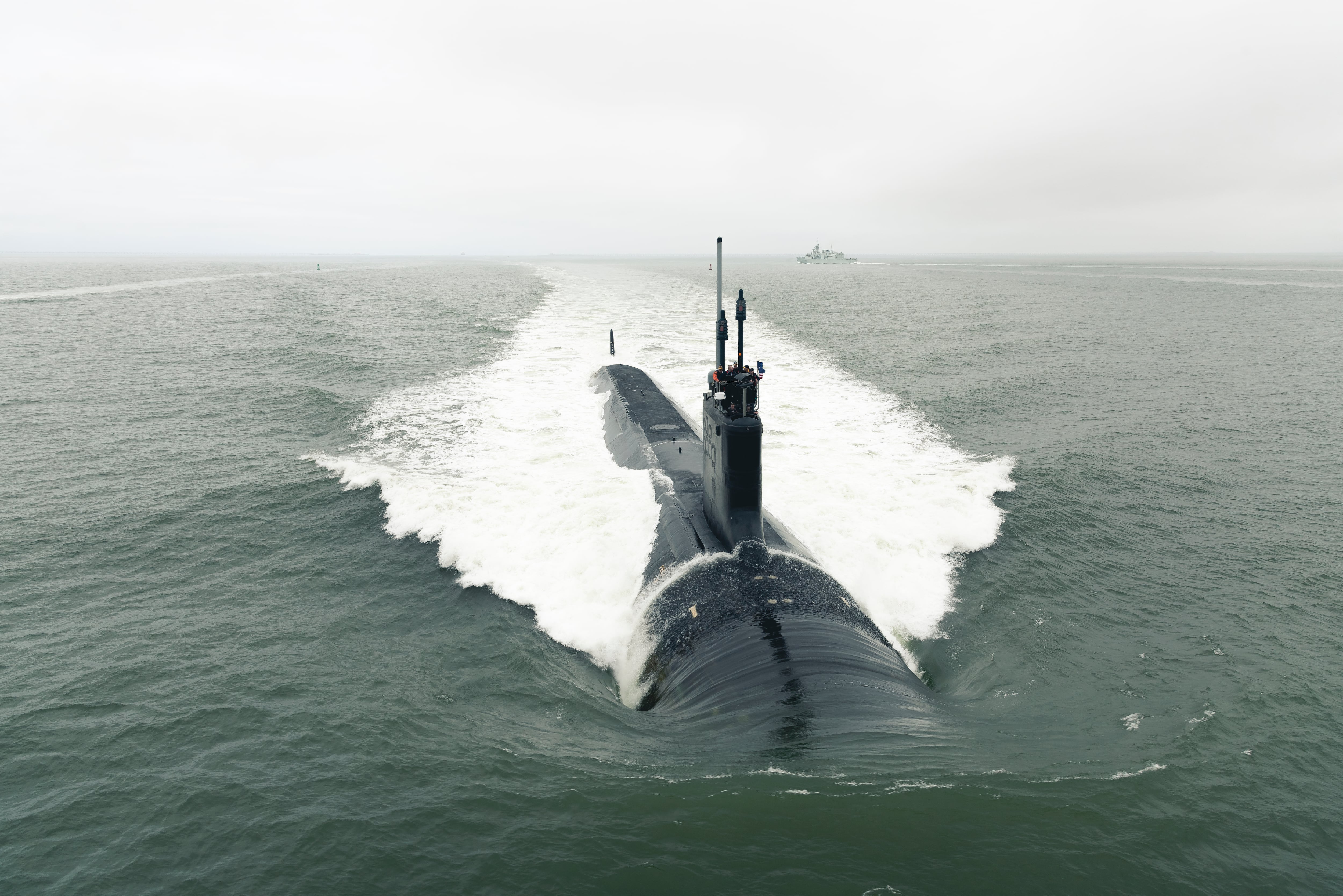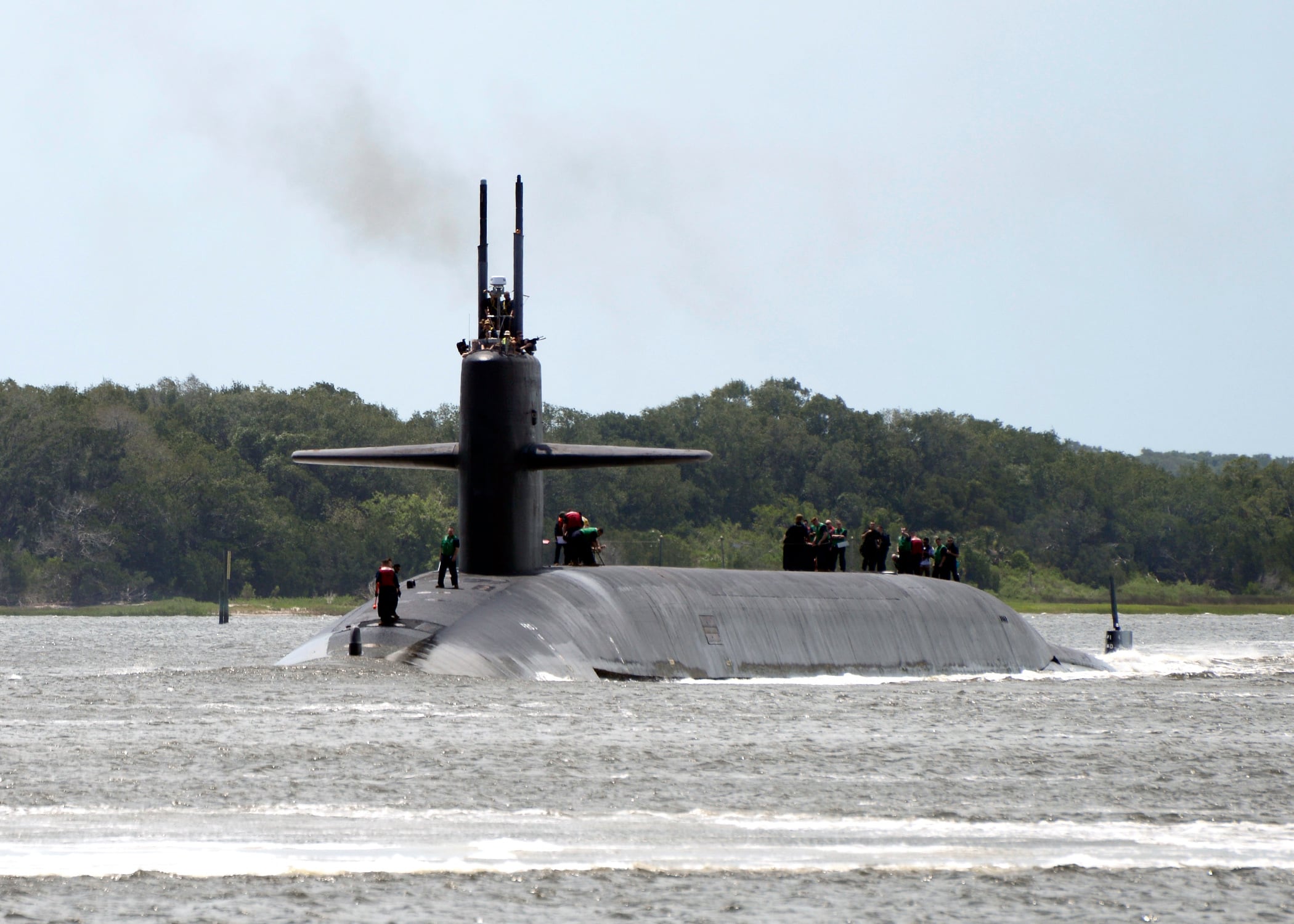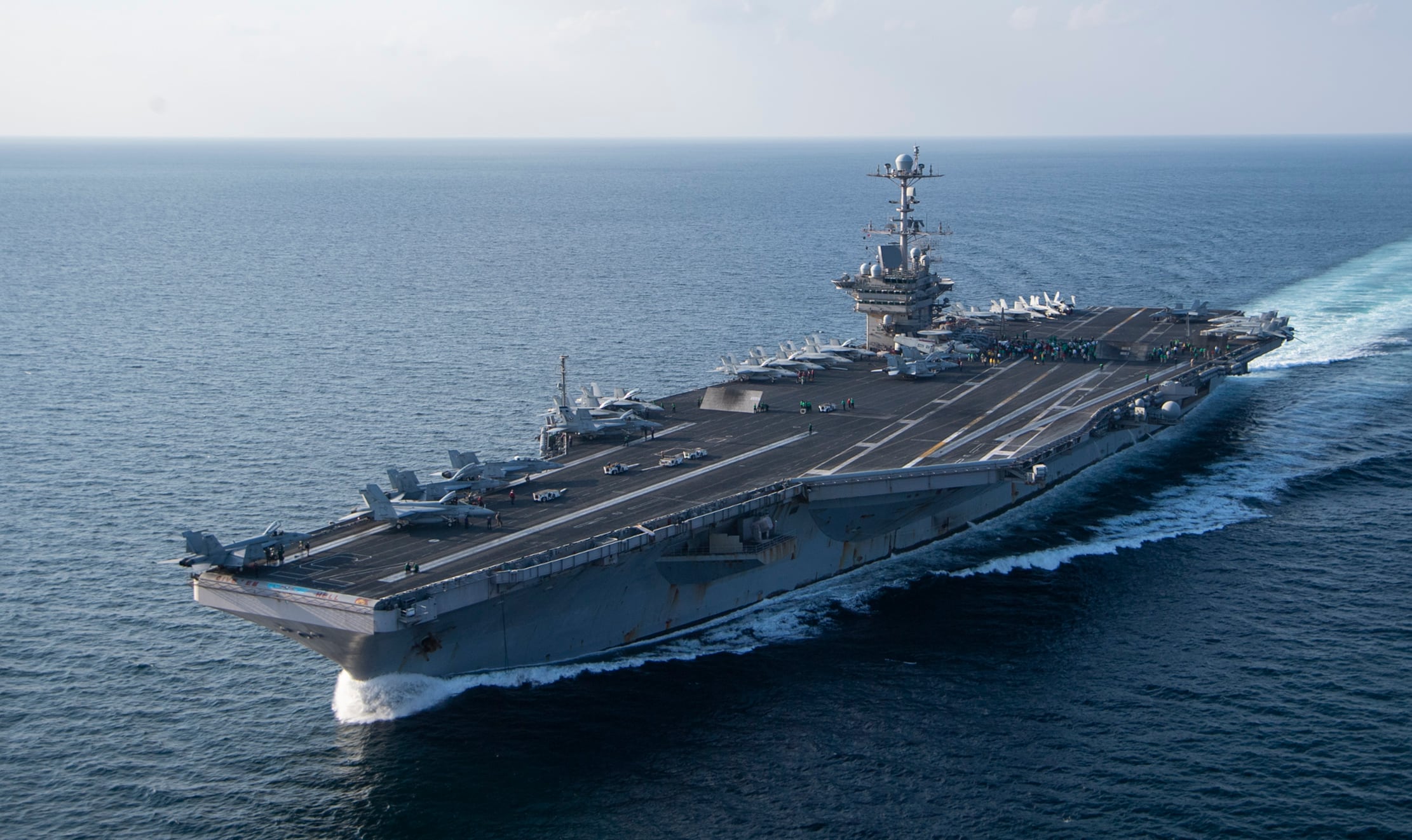WASHINGTON — Despite campaigning on a 350-ship Navy, U.S. President Donald Trump is on track to leave office with a fleet smaller than the 308 ships called for by the Obama administration.
For much of the last administration, the goal was for 305-308 ships, and only in the very late days of Barack Obama’s presidency did a Navy force structure assessment raise the goal to 355 ships. With its latest budget submission, which projects all the way through a hypothetical second term for Trump, the Navy grows to 305 ships.
An examination of the first four budgets compiled by the Trump administration, including one from 2017 that was amended and submitted to Congress by Trump after his inauguration, shows the president proposed a modest 8 percent increase in ship numbers compared to the last four budgets proposed by the Obama administration.
Between the 2013 and 2016 budgets, the Obama administration proposed 34 ships, while between 2017 and 2020, the Trump administration proposed 37.
Despite the more modest shipbuilding bump proposed by Trump, Congress has been much more aggressive, appropriating funds for 50 ships during the same time frame. That’s a 26 percent increase over the White House’s requests.
As Trump’s first term comes to a close, the president who called for a massive fleet buildup as a candidate has presided over something more tempered: a focus on current readiness and pledges to expand the fleet only so long as budgets are growing. And in 2021, with a budget request that’s essentially flat over last year’s request, the Defense Department is attempting to throw the process in reverse, requesting just seven new ships, according to a new Congressional Research Service report.
The president’s fiscal 2021 budget request, with its broad cuts to the destroyer program and its early ship retirements, puts the Navy on track for a 305-ship fleet by 2025, according to budget documents. That is 12 ships fewer than the 317 ships projected to be in the fleet in 2025 in Obama’s 30-year shipbuilding plan introduced in 2016, and that’s eight ships fewer than the Trump administration’s latest shipbuilding plan.
Furthermore, the fleet was supposed to reach 300 ships in 2019, according to the 2016 shipbuilding plan, but the fleet has yet to hit that mark.
The cuts have generated bipartisan criticism and signals from Congress that big changes are coming to shipbuilding. It’s this wave of skepticism that acting Navy Secretary Thomas Modly and Chief of Naval Operation Michael Gilday will face when they testify before the House Armed Services Committee on Thursday.
RELATED

The administration will likely note the fleet has grown under Trump; but because of the long timelines associated with shipbuilding, the fleet was always going to grow in his first term due to shipbuilders’ backlog left over from the Obama era. Certainly the Trump era has seen increases in shipbuilding orders, driven largely by Congress, contributing to what Huntington Ingalls Industries CEO Mike Petters recently described as a “historic backlog” at his yards.
For example, the destroyer Jack Lucas, the first Flight III DDG long planned but ordered in the Trump administration’s first budget, is slated for delivery in 2024 toward the end of Trump’s potential second term.
The first FFG(X) future frigate, devised during the Obama administration and pushed by the late Sen. John McCain, won’t deliver its first hull to the fleet until 2026, more than a year after Trump’s potential second term. And that’s assuming there are no delays. The Trump administration is slowing down the buying profile of the 20-ship FFG(X), according to its latest budget submission.

‘Fight tonight’
Coming into office, Trump’s goal was to grow the fleet by about 23 percent from around 275 ships to 350 ships, but the administration has been hesitant to embrace its own policy.
From Trump’s first defense secretary, Jim Mattis, to his interim successor, Patrick Shanahan, and now the current defense secretary, Mark Esper, the message has been about maintaining readiness and making the existing force “more lethal.”
As the Pentagon chief, Mattis told Congress that boosting the fleet to 355 ships would require a 3-5 percent annual increase in the defense budget. However, some analysts project flat budgets for the foreseeable future.
During his tenure as defense secretary, Mattis often warned the armed services about creating readiness holes by increasing capacity without the ability to man, train and equip that new capacity, according to two former defense officials who spoke to Defense News on condition of anonymity. Mattis was also unhappy with the Navy’s 355-ship goal, believing that the costs associated were exorbitant, the sources said.
The focus on having forces that can “fight tonight,” as the saying goes, is one the current defense secretary has inherited. In his confirmation hearing, Esper said he would continue to balance modernization with current readiness.
“This need to balance current readiness with modernization is the department’s central challenge and will require strong leadership, open and continuous dialogue with others, and the courage to make tough decisions,” he told the Senate Armed Services Committee.
Navy leaders have also bought into the fight against creating capacity it can’t afford to make ready. In January, Defense News reported that Navy leaders, including Chief of Naval Operations Adm. Michael Gilday, internally resisted growing the fleet at the expense of readiness. Navy leaders worried that doing so would cause issues like those uncovered in the wake of 2017’s deadly accidents in the Japan-based 7th Fleet.
Modly has also been pushing that message. In a Dec. 2 interview with Defense News, Modly said he wanted a growing force but not a hollow force.
“We definitely want to have a bigger Navy, but we definitely don’t want to have a hollow Navy either,” Modly said. “These are difficult choices, but the requirement to get to a bigger fleet, whether that’s 355 ships or 355-plus, as I like to talk about, it is going to require a bigger top line for the Navy.
“If you are growing the force by 25-30 percent, that includes people that have to man them. It requires maintenance. It requires operational costs. And you can’t do that if your top line is basically flat.”
The chief culprit in suppressing the Navy’s growth ambitions is the Columbia-class submarine-building program, which Navy leaders have warned for years will cause issues with other shipbuilding programs. Replacing the Ohio-class ballistic missile submarines with the Columbia class will eat almost 40 percent of the Navy’s shipbuilding budget by the second half of the 2020s, Gilday said in recent comments. The first boat ordered in 2021 is slated to cost more in nominal dollars than the Ford-class aircraft carrier, with a price tag exceeding $14 billion, according to FY21 budget documents, though that does not account for early money spent on Ford being adjusted for inflation.
So without a small adjustment to the overall defense budget to accommodate the hit on shipbuilding, growing the fleet becomes untenable, Gilday said.
“Here’s the deal: We need more money,” he said in January at the Surface Navy Association’s annual symposium. “We need more top line.
“If you believe that we require overmatch in the maritime domain — if you believe that in order to execute distributed maritime operations and to operate forward in numbers now that we need more iron — then yes, we need more top line.”
RELATED

But in an exclusive interview with Defense News in February ahead of the FY21 budget rollout, Esper said he did not see the need to give the Navy any special budgetary dispensation.
“Clearly the Columbia is a big bill, but it’s a big bill we have to pay,” Esper said. “That’s the Navy’s bill. The Air Force has a bill called bombers and Ground Based Strategic Deterrent, so that’s a bill they have to pay.
“We all recognize that. Acting Secretary Modly and I have spoken about this. He believes, and I think he’s absolutely correct, that there are more and more efficiencies to be found within the department, the Navy and the Marine Corps, that they can free up money to invest into ships — into platforms.”

Where can the Pentagon find $40 billion?
Esper and Modly’s hope to find significant savings in the Department of the Navy to fund increases in force structure from within have led to a new “stem-to-stern review.”
Modly hopes the review will identify $40 billion in cuts over the next five years across the department that could then be turned into investments to grow the fleet.
The Navy wants to achieve the cuts while fencing off cutting ships or the personnel associated with manning those ships, and maintaining operations tempo, according to a recent memo from Modly. Instead, the service leader is calling for reductions in duplicative information technology and infrastructure; cuts to headquarters staff and contractors; and a reduction in the number of units offered up to combatant commanders through the Global Force Management Allocation Plan.
But Bryan Clark, a former senior aid to Chief of Naval Operations Adm. Jonathan Greenert during the last round of significant Navy cuts, said it will prove difficult to find $8 billion per year while fencing personnel and current force structure.
“You certainly could do it,” said Clark, now a senior fellow at the Hudson Institute in Washington. “You could eliminate half the shipbuilding budget. You could eliminate half to a third of the aviation budget. You could cut a bunch of research, development, testing and evaluation money. And that’s about it. Otherwise you are going to nickel and dime your way to what is a very big number."
Headquarters cuts are also a dubious place to seek significant savings, and that would come with significant risk, Clark said.
“In the past what we’ve tried to do is cut both the number of contractors and civilians at the headquarters and workload in concert,” he said. “There has been an attempt to say, ‘We’ll cut the number of people and the workload,’ but then the workload is never fully adjusted, so the people you’ve got are just working harder. That kills morale.”

This was the case when Defense Secretary Bob Gates presided over a significant headquarters reorganization during the Obama years, Clark said.
“They did eliminate a lot of positions and contractors but they didn’t really address the workload,” he said. “The staff processes continued unabated, so the remaining workers were demotivated, tired and overworked. That ends up driving good people out of government.”
Many of those workers have since been hired back, Clark said.
Todd Harrison, a budget expert with the Center for Strategic and International Studies, said the operations and maintenance account is the fund with the most potential to yield significant savings, despite Modly’s desire to shield operations tempo.
“If you are constrained in that you can’t reduce the fleet size and you can’t reduce end strength, then you go to O&M and other kinds of procurement such as munitions and aircraft,” Harrison said. “Given the constraints being placed on the Navy by the White House and others, if you are not going to cut ship count, you are going to have to cut something.”
Savings
The fundamental issue with the reduction strategy is that is unlikely to be accomplished to the tune of $8 billion per year without deep and painful cuts to the force in an election year, said a retired senior naval officer who spoke to Defense News on condition of anonymity.
“You pretty much HAVE to go to the [military personnel] and [operations and maintenance] accounts,” the retired officer wrote in an email. “If you want to get $4 billion out of [personnel] in a year, you have to get 40,000 sailors off the books in that year.
“If you want to get $4 billion out of operations and maintenance in a year, you have to essentially tie up the fleet AND bring maintenance to a halt, now.”

Finding low-priority programs and redundant capabilities as the Army has done through its vaunted “night court” effort is unlikely to yield significant savings, the retired officer said.
“You can ‘identify low priority, redundant or legacy capabilities, programs, processes or headquarters functions’ all you want until the cows come home,” the retired officer wrote, quoting a recent memo from Modly, “and you will not likely reach 10-20 percent of the goal.”
The other dubious line in the recent Modly memo, first reported by USNI News, was the idea of reducing Navy offerings to the Global Force Management Allocation Plan. The GFMAP matches up the four-star regional combatant commanders’ demands for forces with available units, which is adjudicated by the Joint Chiefs of Staff and the defense secretary. But the Navy has long complained that its contributions have well outstripped its ability to reset its forces.
This mismatch drove the Navy to reorganize its fleet deployment plan, called the Optimized Fleet Response Plan, which was rolled out in 2014. But that effort has been beset by issues, and demand for Navy forces has not aligned with what O-FRP can supply, which was the point of the program in the first place.
What it comes down to is that the U.S. Navy isn’t going to refuse a deployment order from the defense secretary, the retired officer noted.
“Likelihood of refusing GFMAP-directed deployment requirements? Zero,” the retired officer wrote.
RELATED

Ultimately the drive to 355 ships was unrealistic from the start, said Harrison. The Navy must come up with a plan that aligns with both the strategy and budget realities, he added.
“A strategy-driven plan that isn’t informed by budget constraints isn’t actually driven by strategy,” Harrison said. “The whole reason you have strategy is because you don’t have unlimited resources."
“If you had unlimited resources, you don’t need a strategy — you just do more of everything. How many aircraft carriers? A thousand. How many destroyers? I don’t know, what’s the largest number I can enter in the spreadsheet?” he added.
“Any real strategy-driven approach will have budget constraints built into it. That’s what forces you to make choices.”
David B. Larter was the naval warfare reporter for Defense News.





